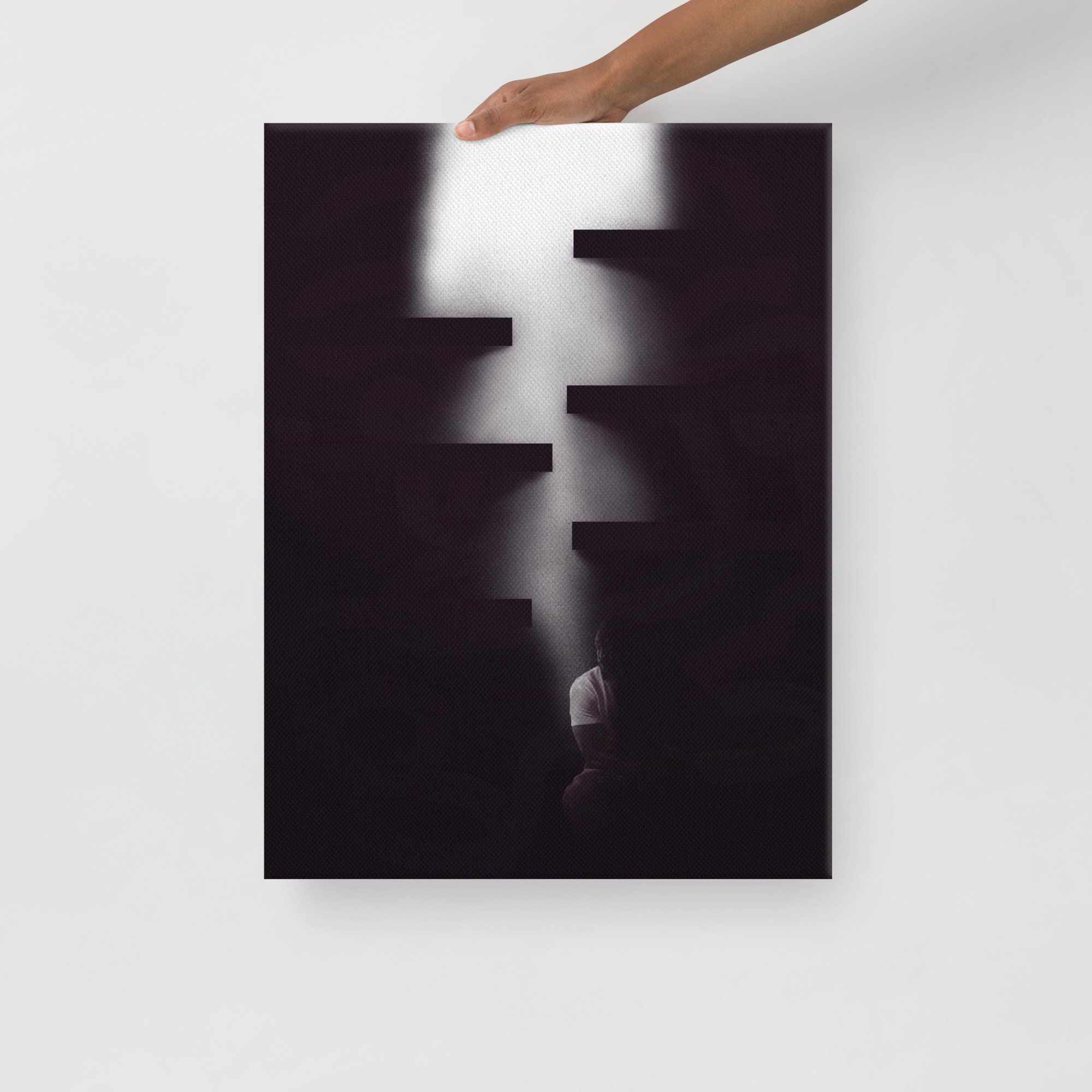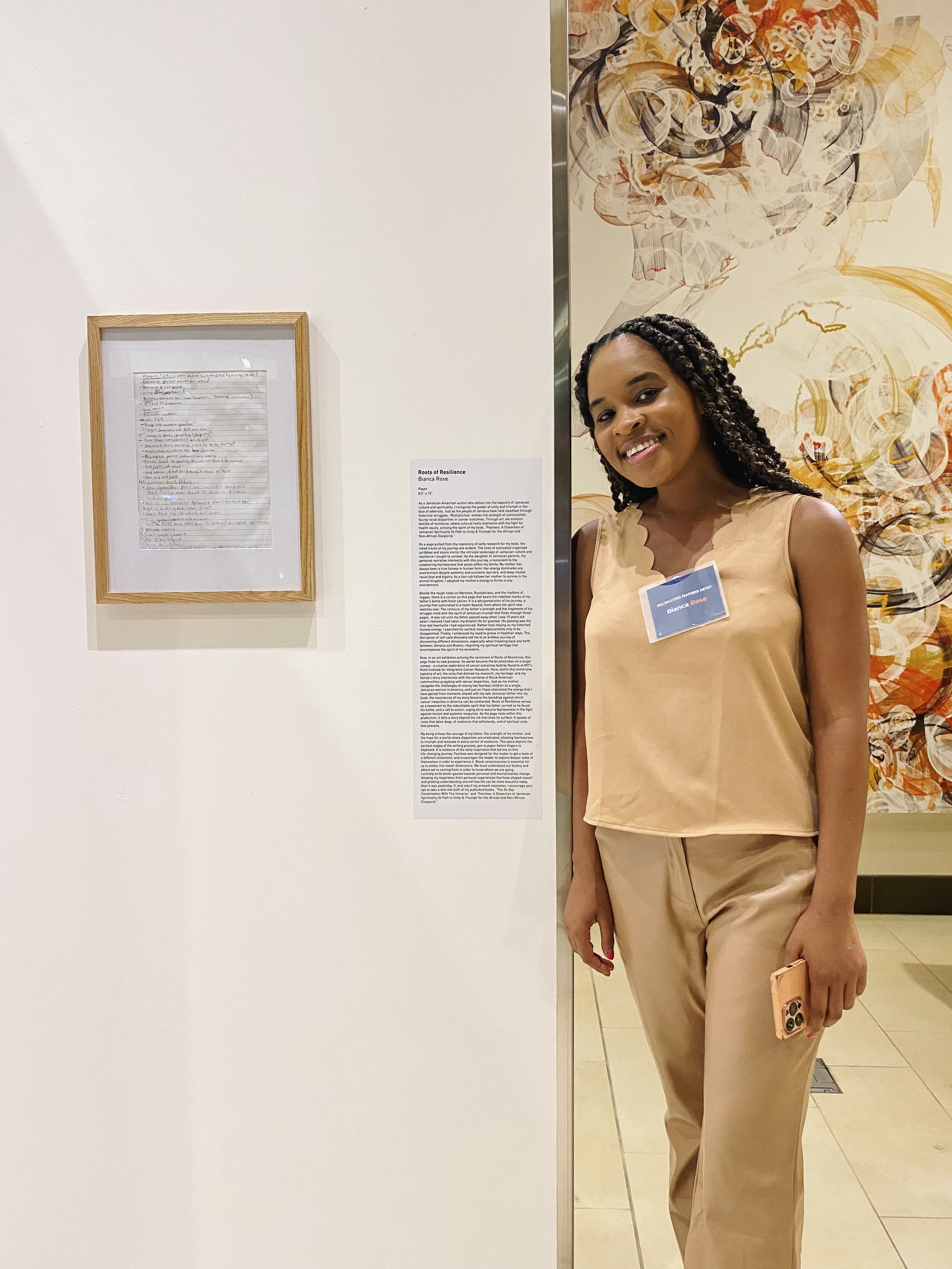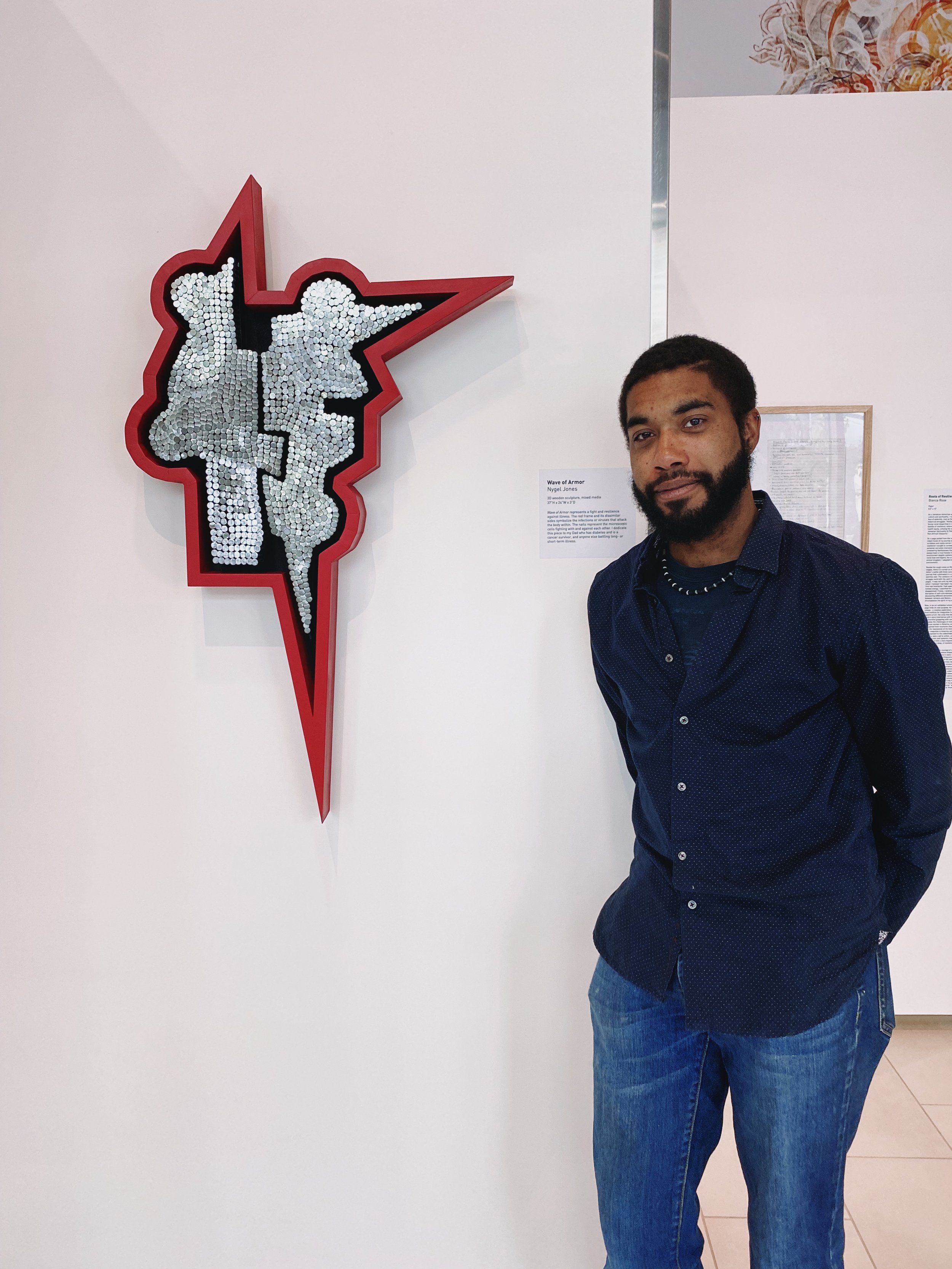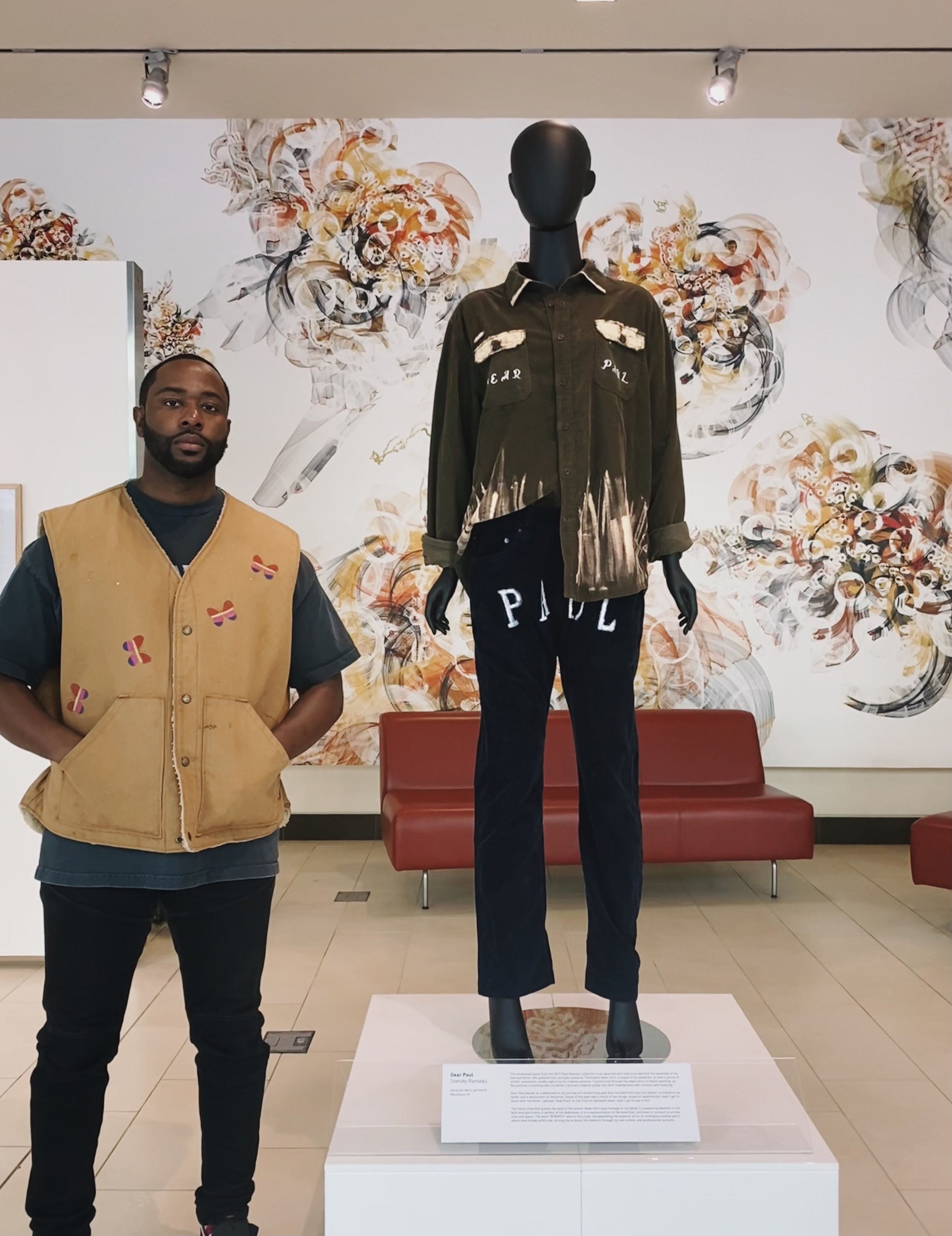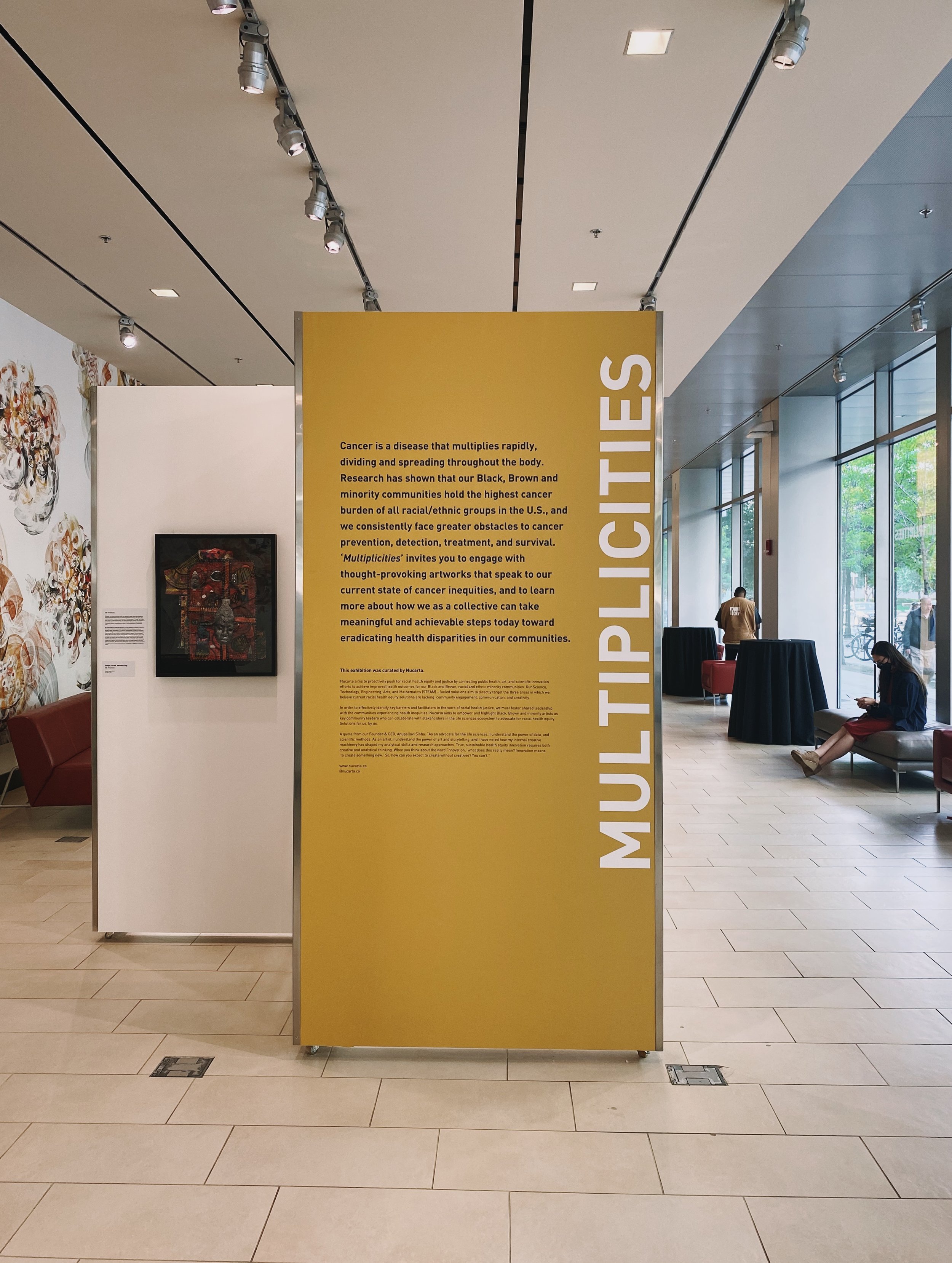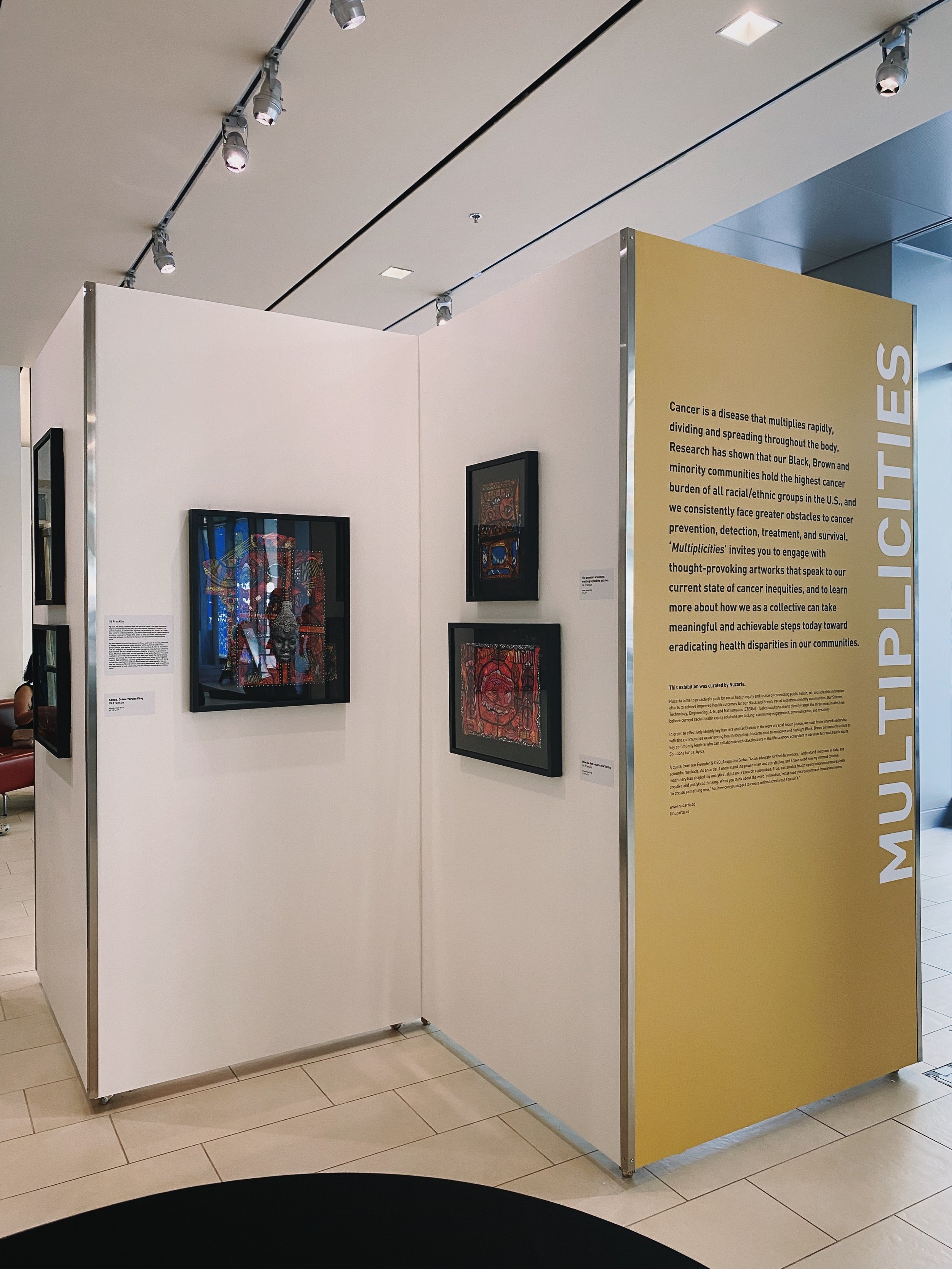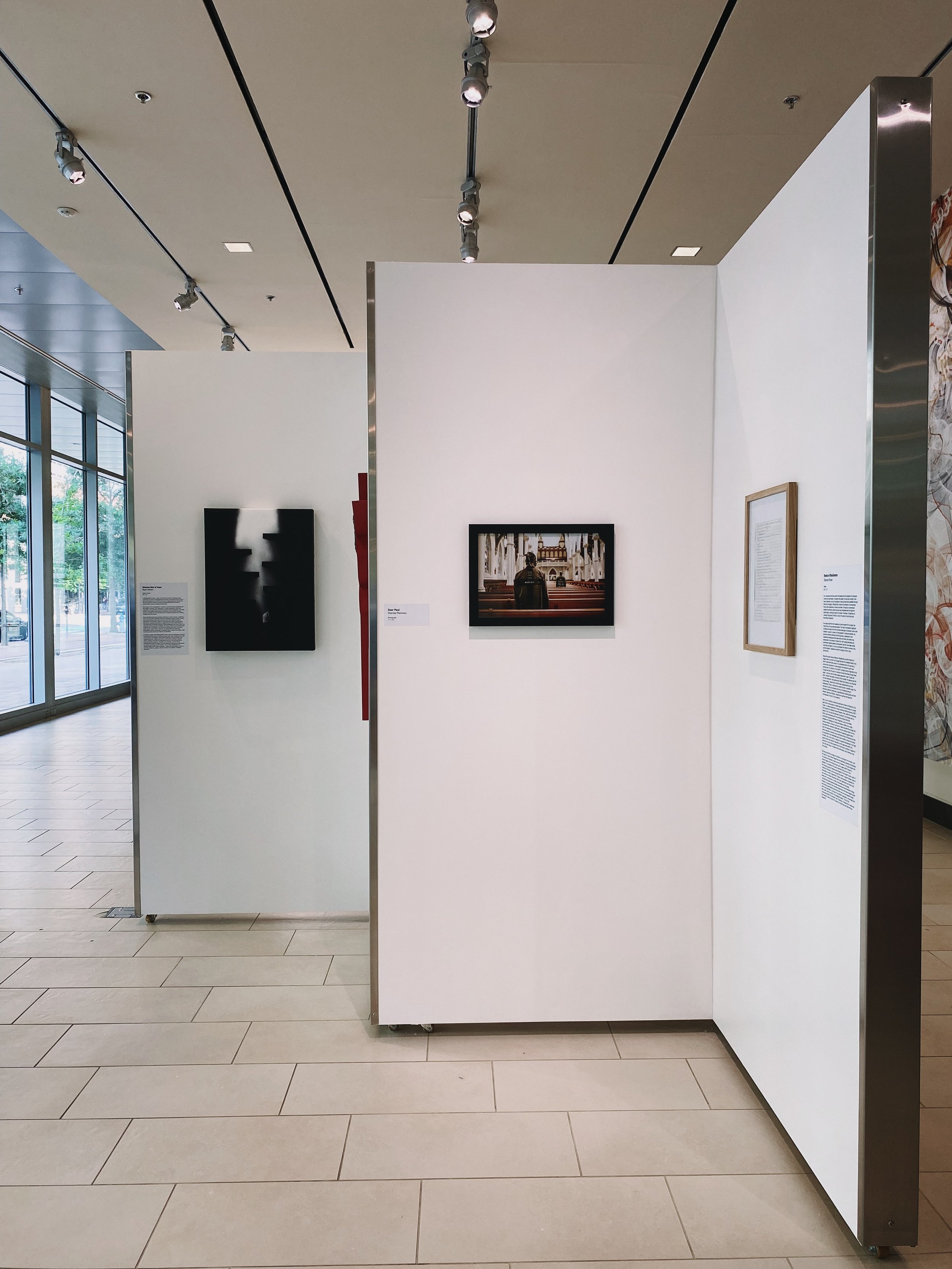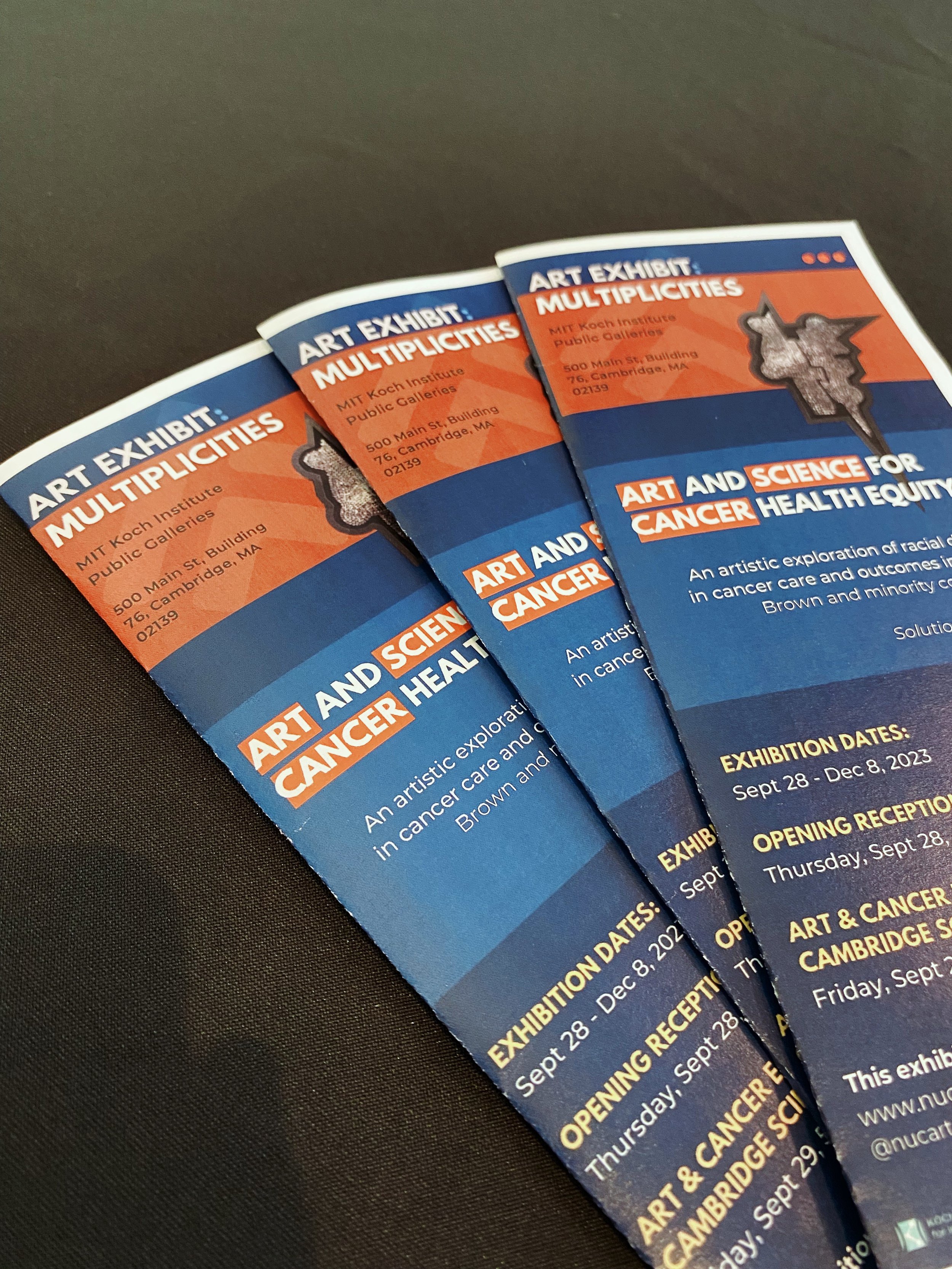Multiplicities: An Artistic Exploration of Racial Disparities in Cancer Outcomes
THE ART
In Wishing Well of Hope, I delve into the harsh theme of battling cancer, capturing the sense of hopelessness that often accompanies this journey. I aim to shed light on not only the personal struggle people go through but also the systemic barriers that deny marginalized Black and brown communities access to adequate healthcare.
At the heart of the composition, a person is anchored down grappling with the weight of cancer, their expression is mostly engulfed in darkness, reflecting in the emotional turmoil that comes with the diagnosis. The deep somber color palette paired with the contrast of the obscured skylight serves to amplify the raw intensity of their despairing experience, evoking empathy from the viewer.
The narrative transcends individual suffering to unveil a larger, unsettling truth: the inequities ingrained within the healthcare system. Black, brown, and minority groups have had to endure the brutal reality of living in segregated communities. Data from The American Cancer Society show that living in predominantly Black neighborhoods in the United States is associated with increased chances of being diagnosed with cancer after the cells have already spread throughout the body; prostate cancer death rates in Black men, in particular, are more than double than that of any other ethnic group. Upon further research, we understand that attending preventative cancer screenings can greatly help to reduce this burden. Still, screening rates remain low in Black communities.
As viewers engage with Wishing Well of Hope, they are prompted to confront the disheartening reality of battling disease while also navigating the wider social issues surrounding racial health inequities. My piece depicts the hopelessness felt in Black and brown communities, having to operate within a system that does not adequately serve us. By intertwining the personal and the systemic, I implore us to consider a future where marginalized voices are heard, and care-delivery systems are created with our stories and needs at the forefront. One in which healthcare is a universal right, rather than a privilege --where the fight against cancer is met with solidarity, support, and the promise of a brighter, healthier tomorrow.
THE EVENT
I was fortunate to be chosen as 1 of 5 artists to exhibit works in Nucarta’s Multiplicities: An Artistic Exploration of Racial Disparities in Cancer Outcomes exhibition held in MIT’s Koch Institute Public Galleries. The exhibition focuses on the burden that Black, brown, and minority communities face when battling the burdens of cancer and cancer healthcare in the United States. This exhibition offered the platform to discuss each artist’s experience with the impact cancer has had on their lives.
Anu Sinha, CEO and founder of Nucarta, was very mindful and strategic with her curation of the exhibition. She was able to utilize and amplify each artist’s expression of resilience seamlessly through their rooted understanding of strength grown through turmoil. Each piece showcased an in-depth perspective of the effects of cancer. Whether it be on a cellular or celestial level (words used by Ifé Franklin to describe the all-encompassing nature of art), each artist showcased the battle and scars that cancer imprints on everyone around it.
To be able to connect true stories told during the artist talk, and appreciation for one another’s dedication to our expressions, this exhibition allowed us to foster a sense of connection, enabling me to forge personal connections with fellow artists and art enthusiasts who appreciated the depth and intricacy of all the work.
The exhibition will be displayed until Dec. 8th.
Artist Featured:
Ifé Franklin
Nygel Jones
Bianca Rose
Stanley Rameau


